Etiqueta "datacenters"
Se han encontrado 5 Coincidencias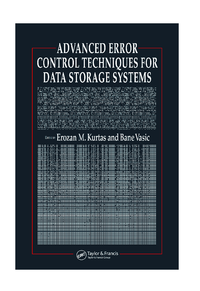
Advanced Error Control Techniques for Data Storage Systems
121 Visitas | 193 Descargas | 2013-09-27 14:30:19 | moliver
With the massive amount of data produced and stored each year, reliable storage and retrieval of information is more crucial than ever. Robust coding and decoding techniques are critical for correcting errors and maintaining data integrity. Comprising chapters thoughtfully selected from the highly popular Coding and Signal Processing for Magnetic Recording Systems, Advanced Error Control Techniques for Data Storage Systems is a finely focused reference to the state-of-the-art error control and modulation techniques used in storage devices. The book begins with an introduction to error control codes, explaining the theory and basic concepts underlying the codes. Building on these concepts, the discussion turns to modulation codes, paying special attention to run-length limited sequences, followed by maximum transition run (MTR) and spectrum shaping codes. It examines the relationship between constrained codes and error control and correction systems from both code-design and architectural perspectives as well as techniques based on convolution codes. With a focus on increasing data density, the book also explores multi-track systems, soft decision decoding, and iteratively decodable codes such as Low-Density Parity-Check (LDPC) Codes, Turbo codes, and Turbo Product Codes. Advanced Error Control Techniques for Data Storage Systems offers a comprehensive collection of theory and techniques that is ideal for specialists working in the field of data storage systems.
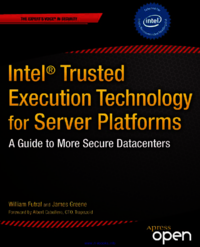
Intel Trusted Execution Technology for Server Platforms
IT
69 Visitas | 125 Descargas | 2013-10-24 02:28:34 | cbustillo
Intel Trusted Execution Technology (Intel TXT) is a new security technology that started appearing on Intel server platforms in 2010. This book explains Intel Trusted Execution Technology for Servers, its purpose, application, advantages, and limitations. This book guides the server administrator / datacenter manager in enabling the technology as well as establishing a launch control policy that he can use to customize the server's boot process to fit the datacenter's requirements. This book explains how the OS (typically a Virtual Machine Monitor or Hypervisor) and supporting software can build on the secure facilities afforded by Intel TXT to provide additional security features and functions. It provides examples how the datacenter can create and use trusted pools.
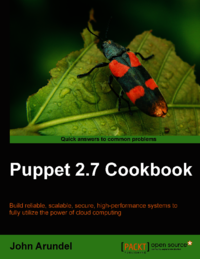
Puppet 2.7 Cookbook
Gestión de servidores
92 Visitas | 99 Descargas | 2014-04-09 03:11:08 | mmartin
Build reliable, scalable, secure, high-performance systems to fully utilize the power of cloud computing Shows you how to use 100 powerful advanced features of Puppet, with detailed step-by-step instructions Covers all the popular tools and frameworks used with Puppet: Dashboard, Foreman, MCollective, and more Includes the latest features and updates in Puppet 2.7 Written in a simple, practical style by a professional systems administrator and Puppet expert, every recipe has detailed step-by-step instructions showing you the exact commands and configuration settings you need In Detail A revolution is coming to IT operations. Configuration management tools can build servers in seconds, and automate your entire network. Tools like Puppet are essential to take full advantage of the power of cloud computing, and build reliable, scalable, secure, high-performance systems. The book takes you beyond the basics to explore the full power of Puppet, showing you in detail how to tackle a variety of real-world problems and applications. At every step it shows you exactly what commands you need to type, and includes full code samples for every recipe. The book takes the reader from a basic knowledge of Puppet to a complete and expert understanding of Puppet's latest and most advanced features, community best practices, writing great manifests, scaling and performance, and how to extend Puppet by adding your own providers and resources. The book includes real examples from production systems and techniques that are in use in some of the world's largest Puppet installations, including a distributed Puppet architecture and a high-performance Puppetmaster solution using Apache and Passenger. Explore the power of Puppet with this practical guide to the world's most popular configuration management system What you will learn from this book Make Puppet reliable, performant, and scalable Produce eye-catching reports and information for management Understand common error messages and troubleshooting common problems Manage large networks with tools like Foreman and MCollective Use classes and inheritance to write powerful Puppet code Deploy configuration files and templates for lightning-fast installations Use virtual machines to build test and staging environments, and production systems on cloud platforms such as EC2 Automate every aspect of your systems including provisioning, deployment and change management Approach This book is written in a Cookbook style showing you how to set up and expand your Puppet infrastructure. It progresses through detailed information on the language and features, external tools, reporting, monitoring, and troubleshooting, and concludes with many specific recipes for managing popular applications. Who this book is written for The book assumes that the reader already has a working Puppet installation and perhaps has written some basic manifests or adapted some published modules. It also requires some experience of Linux systems administration, including familiarity with the command line, file system, and text editing. No programming experience is required.
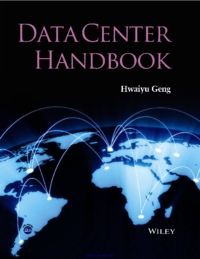
Data Center Handbook
Data Center
89 Visitas | 121 Descargas | 2014-12-10 14:27:58 | cbustillo
Data Center Handbook provides the fundamentals, technologies, and best practices in designing, constructing and managing mission critical, energy efficient data centers. The most comprehensive single source guide ever published in this field, with 36 chapters and over 350 illustrations written by 50 world class authors; Offers disaster management techniques and lessons learned from 2011 earthquake and tsunami in Japan, and 2012 Superstorm Sandy; Discusses international standards and requirements, with contributions from experts in the United States, Canada, United Kingdom, France, Sweden, Japan, Korea, and China.
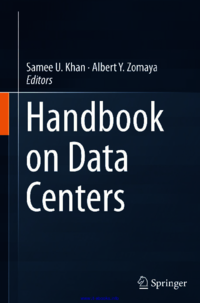
Handbook on Data Centers
89 Visitas | 127 Descargas | 2015-10-01 21:24:24 | cbustillo
This handbook offers a comprehensive review of the state-of-the-art research achievements in the field of data centers. Contributions from international, leading researchers and scholars offer topics in cloud computing, virtualization in data centers, energy efficient data centers, and next generation data center architecture. It also comprises current research trends in emerging areas, such as data security, data protection management, and network resource management in data centers. Specific attention is devoted to industry needs associated with the challenges faced by data centers, such as various power, cooling, floor space, and associated environmental health and safety issues, while still working to support growth without disrupting quality of service. The contributions cut across various IT data technology domains as a single source to discuss the interdependencies that need to be supported to enable a virtualized, next-generation, energy efficient, economical, and environmentally friendly data center.
Contribuir
Usted puede contribuir con Libros UCLV, es importante para nosotros su aporte..
Contribuir